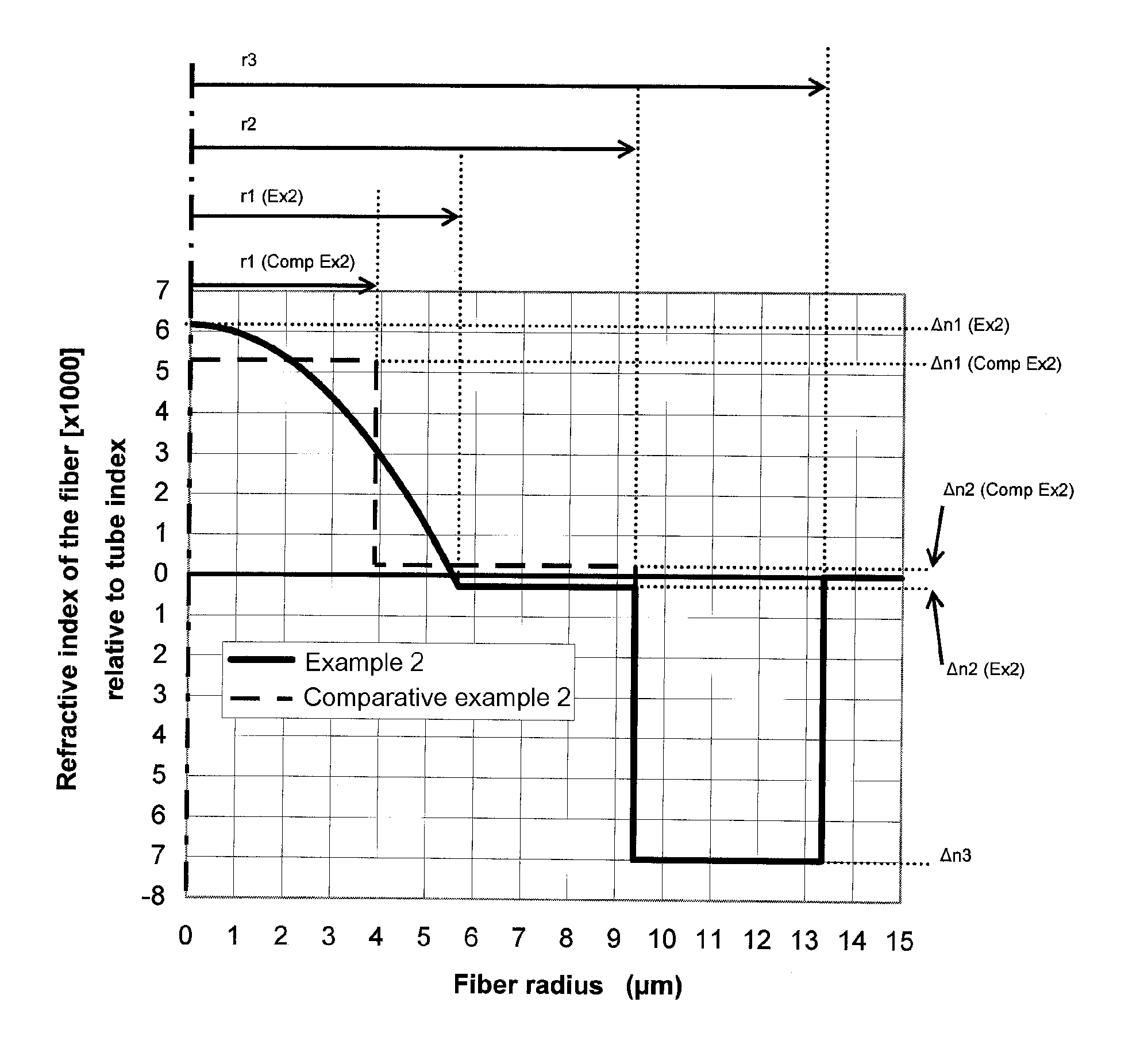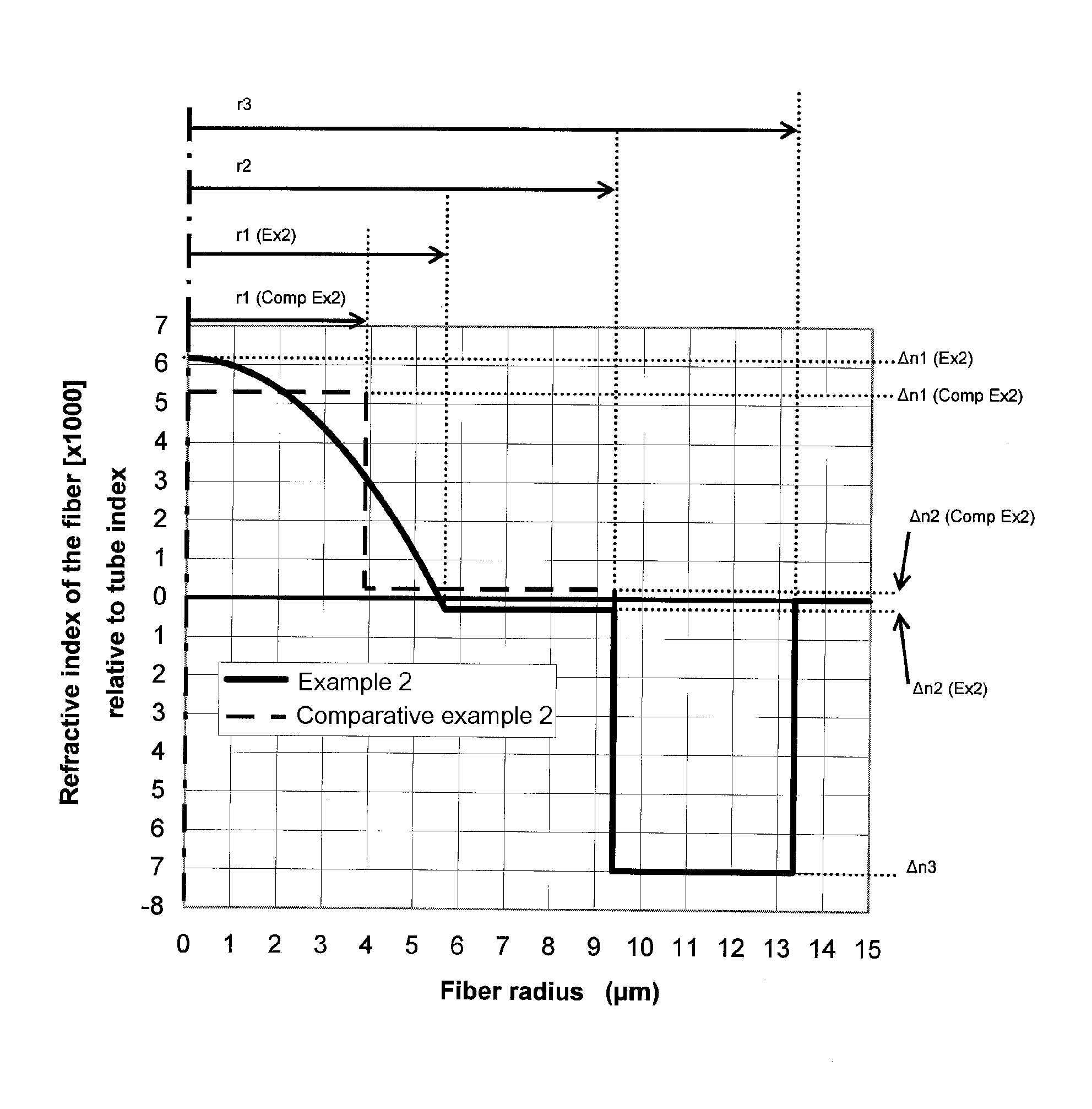Single-mode optical fiber
a single-mode, optical fiber technology, applied in the field of optical fiber transmission, can solve the problems of not meeting the requirements of the itu-t, and commercially incompatible optical fiber with certain transmission systems, so as to facilitate the optical fiber fabrication process to be more flexible and flexible, reduce bending losses, and reduce bending losses
- Summary
- Abstract
- Description
- Claims
- Application Information
AI Technical Summary
Benefits of technology
Problems solved by technology
Method used
Image
Examples
Embodiment Construction
[0053]In one aspect, the present invention embraces an optical fiber that includes (i) a central core, (ii) an intermediate cladding, (iii) a buried trench (e.g., a depressed cladding), and (iv) an outer cladding.
[0054]The central core has a radius r1 and an index difference Δn(r) relative to the outer cladding, which acts as an optical cladding. The refractive index of the core typically has a parabolic shape. Accordingly, the refractive-index difference Δn(r) between the central core and the outer cladding depends on the distance r from the center of the optical fiber (e.g., decreasing as the distance from the center of the optical fiber increases). Thus, the central core defines a maximum refractive-index difference Δn1 with respect to the outer cladding. As used herein, the term “refractive-index difference” does not exclude a refractive-index difference of zero.
[0055]The intermediate cladding has (i) a radius r2 and (ii) a refractive-index difference Δn2 with respect to the out...
PUM
 Login to View More
Login to View More Abstract
Description
Claims
Application Information
 Login to View More
Login to View More - R&D
- Intellectual Property
- Life Sciences
- Materials
- Tech Scout
- Unparalleled Data Quality
- Higher Quality Content
- 60% Fewer Hallucinations
Browse by: Latest US Patents, China's latest patents, Technical Efficacy Thesaurus, Application Domain, Technology Topic, Popular Technical Reports.
© 2025 PatSnap. All rights reserved.Legal|Privacy policy|Modern Slavery Act Transparency Statement|Sitemap|About US| Contact US: help@patsnap.com



